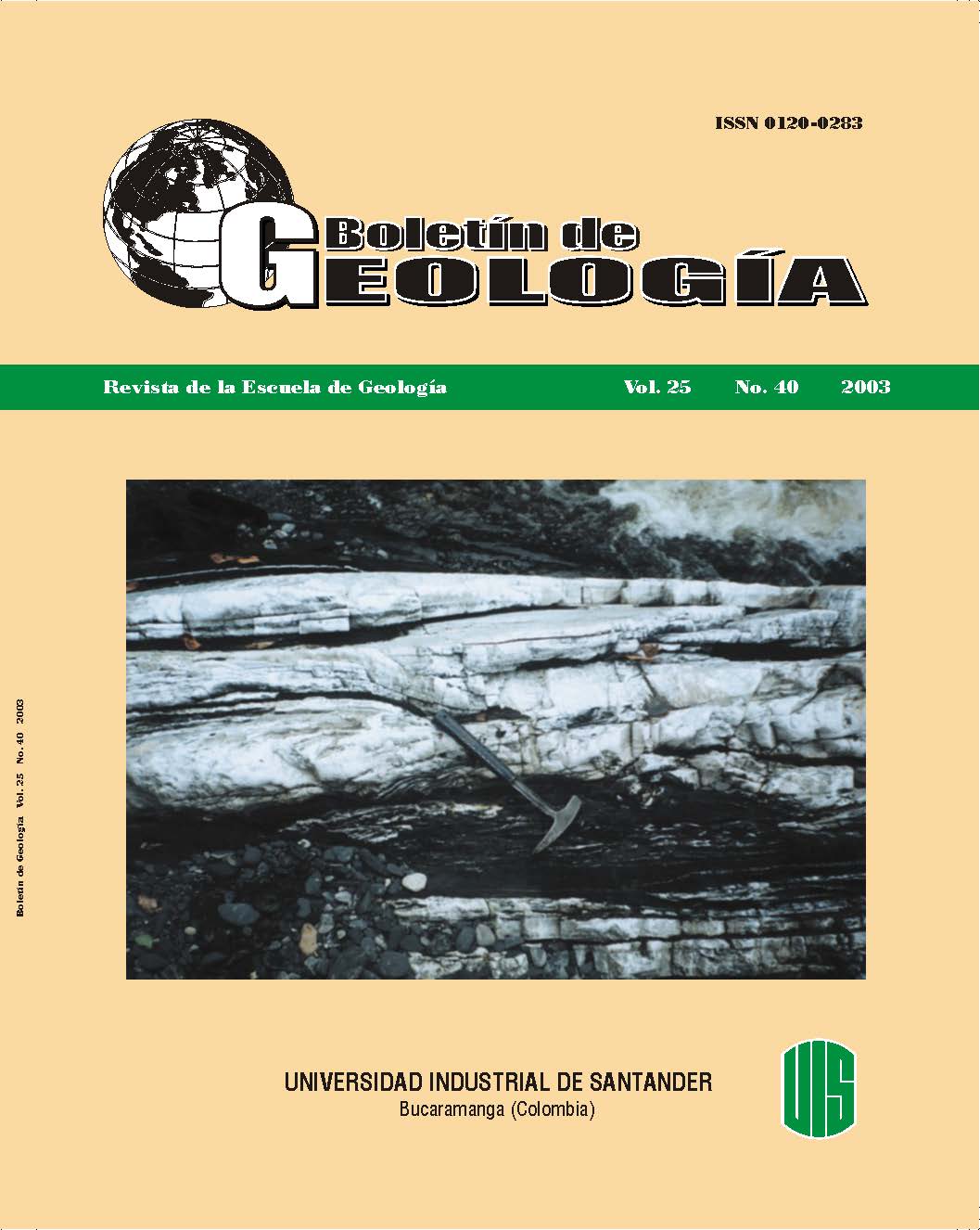Mineralogía, geoquímica y algunos aspectos genéticos de la mina El Diamante- Nariño (Colombia).
Published 2003-08-28
How to Cite
Abstract
The Diamante mine is located in the southwestern part of Colombia on the west flank of the Occidental Andes Cordillera. The fluid associated with gold mineralization has a range of salinity between 1.7 to 5.8 wt % NaCl equivalent. Densities vary from 0.58 to 0.92 g/cc. Homogenization temperature averages range between 228-340°C. d34Spyrite values of –7.1 to –5.3‰ and d34SSS = -5.7‰ suggest a mixing of sulfur with sedimentary and magmatic origin. The d18O and dD values for the fluids are 7.6 to 9.6‰ and -74 to -83‰, respectively. The isotopic and fluid inclusion data of ore fluids suggest that the gold mineralization at the Diamante mine may have evolved from mixing of magmatic and meteoric fluids possibly related to intrusion of the nearby Piedrancha Granodiorite of late Miocene age. The gold deposition is attributed to destabilization of the bisulfide complex as a result of decrease of the sulfur activity, through sulfide deposition and/or H2S loss.
